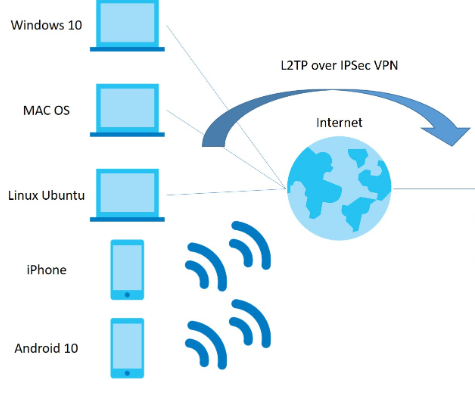L2TP Operate

Layer 2 Tunneling Protocol (L2TP) operates by creating a tunnel between two endpoints over an IP network, allowing the transmission of data packets from one point to another. Here's a step-by-step overview of how L2TP operates:
-
Tunnel Establishment:
- L2TP requires two endpoints: the L2TP Access Concentrator (LAC) and the L2TP Network Server (LNS). The LAC initiates the tunnel establishment process, and the LNS responds to the request.
- The LAC and LNS negotiate parameters such as tunnel authentication, encapsulation type, and session ID assignment.
-
Session Initialization:
- Once the tunnel is established, L2TP creates a session for communication between the client and server. This session is used to transport data packets and control messages.
- Each session is assigned a unique session ID to distinguish it from other sessions within the same tunnel.
-
PPP Connection Establishment:
- Within the L2TP tunnel, a Point-to-Point Protocol (PPP) connection is established between the client and server. PPP is responsible for negotiating parameters such as authentication, compression, and network layer protocols.
- The PPP connection allows for the transmission of data packets over the L2TP tunnel.
-
Encapsulation:
- L2TP encapsulates data packets from higher-layer protocols, such as PPP, within UDP (User Datagram Protocol) packets. This encapsulation process allows PPP frames to be transmitted over IP networks.
- Each PPP frame is wrapped within an L2TP header, which includes information such as the session ID and length of the payload.
-
Transmission:
- Encapsulated L2TP packets are transmitted between the client and server over the IP network. These packets may traverse multiple network devices, including routers and switches, before reaching their destination.
- The encapsulated packets are decapsulated at the receiving end, where the original PPP frames are extracted and processed.
-
Optional Encryption and Authentication:
- While L2TP itself does not provide encryption or authentication, it is often used in conjunction with IPsec (IP Security) to add these security features.
- When combined with IPsec, L2TP/IPsec provides encryption, authentication, and data integrity for the VPN connection. IPsec operates in tunnel mode, encrypting and authenticating the entire L2TP packet, including the payload.
By establishing tunnels and encapsulating data packets, L2TP enables secure communication between remote clients and servers over IP networks. Its compatibility with various network protocols and support for encryption/authentication through IPsec make it a widely used protocol for VPN deployments.
Thank you,
